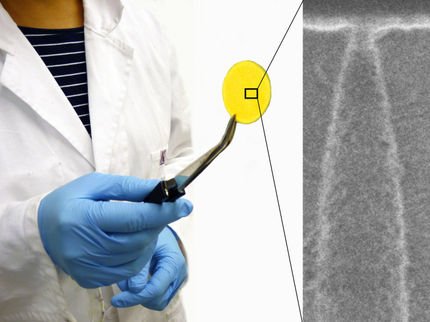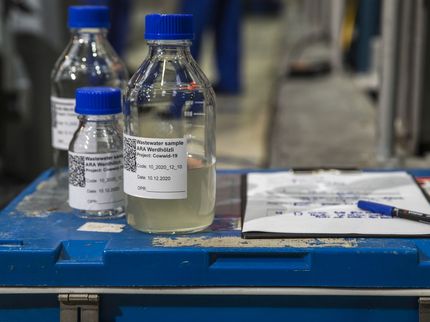A vast viral world in wastewater
How metagenomic sequencing helps to understand the spread of viruses
Deep metagenomic sequencing of wastewater in Berlin over 17 months shows this technique could help forecast disease outbreaks and monitor the spread of human pathogens. It can also reveal thousands of novel viruses, according to a study by the Landthaler lab published in “Environment International.”
Public health officials have long monitored wastewater for the presence of particular microbes in their towns, such as polioviruses or SARS-CoV-2. But a broader surveillance that reveals unlooked-for and unknown viruses is not the norm in most places.
That may change in the future, as research by the team of Professor Markus Landthaler, head of the lab “RNA biology and posttranscriptional regulation” at Max Delbrück Center, shows that wastewater is a treasure trove of data about viruses in the local environment. The scientists analyzed samples from a Berlin waste treatment plant using shotgun metagenomic sequencing. This technique allowed a deep examination of viruses in the water, from strains down to single-nucleotides mutants.
Tracking the spread of individual virus strains
They found common viruses such as RSV and flu reliably, and were able to track the seasonal spread of variants. The team found seasonal visitors in the wastewater: asparagus-infecting viruses appeared in the spring. Grapevine viruses were present in the fall. And those infecting watermelons during the summer, along with a virus that affects Berlin’s mosquitoes.
The scientists studied the abundant astroviruses, which can cause infections of the gastrointestinal tract in humans, in greater detail. By studying the occurrence of viral genome mutations in the Berlin samples and comparing it with data from wastewater collected elsewhere, the scientists were able to track the global spread of individual virus strains. They were also able to detect and sequence about 70 human pathogens that were less common using enrichment probes. And they discovered thousands of novel viruses, increasing our knowledge of viral diversity. Still, the work does not stop with viruses. The data even revealed hundreds of enzymes with potential use in biotechnology, the so called TnpB endonucleases. The study was published in “Environment International.”
“I think wastewater surveillance has tremendous possibilities because sequencing will become cheaper,” Landthaler says. “As the machines get better, the computational tools to analyze all this data will also become better.”
Looking for entirely novel species
The research began during the COVID-19 pandemic when the Landthaler lab collaborated with a Berlin wastewater treatment plant run by Berliner Wasserbetriebe, to track the rise and spread of SARS-CoV-2 variants. As the pandemic petered down, the team decided to re-examine their samples collected between March 2021 and July 2022.
“We were curious about what else do we find in there?” says Dr. Emanuel Wyler, a postdoc in the Landthaler Lab and first author of the study. “We had a very comprehensive data set that is unique in terms of its depth and longitudinal span.”
The scientists extracted RNA from the samples and generated 116 complementary-DNA libraries. They fed the libraries to a sequencer, which yielded millions of data points.
“Analyzing all this data is challenging,” says Dr. Chris Lauber, a computational virologist at the TWINCORE, Centre for Experimental and Clinical Infection Research of the Hannover Medical School (MHH) and the Helmholtz Centre for Infection Research (HZI). “While it is easier to sort genomic data into broad families of viruses, it can be challenging to go deeper and look for variants or entirely novel species.”
This shows the potential of wastewater in studying the evolution of pathogenic viruses as a part of public health surveillance, Landthaler says. “Doing metagenomic analysis of wastewater from a wide variety of locations worldwide should be a priority,” he says.
Original publication
Emanuel Wyler, Chris Lauber, Artür Manukyan, Aylina Deter, Claudia Quedenau, Luiz Gustavo Teixeira Alves, Claudia Wylezich, Tatiana Borodina, Stefan Seitz, Janine Altmüller, Markus Landthaler; "Pathogen dynamics and discovery of novel viruses and enzymes by deep nucleic acid sequencing of wastewater"; Environment International, Volume 190





























































